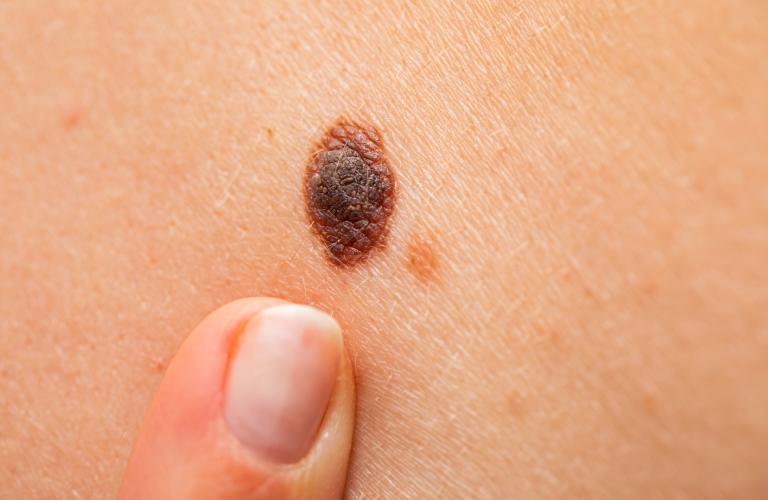
Moles
- March 25, 2021
- Posted by Dr. Vaidya Karanvir Singh
- 0 Comment(s)
- Our skin is the largest organ in our body. Skin moles are growths on your skin that vary in color from your natural skin shade to brown-black.
- Moles can appear anywhere on your body or mucous membranes, one or multiple.
- The life cycle of a mole is generally about 50 years. As the year’s pass, moles generally change gradually, becoming raised and lighter in color.
- Most skin moles appear in early childhood age and during the first 20 years of life. It is ordinary for an individual to have between 10 to 40 moles by adulthood.
- Often, hairs develop on the mole. Some moles will not alter at all over the years and some will gradually diminish over time.
Table of Contents
Types of skin moles
Common:
This is a normal general mole, a small growth on your skin that’s pink, brown, black, or tan and has a discrete edge.
Dysplastic:
These moles are way larger in shape than a pencil eraser and uneven in shape. Dysplastic nevi tend to have an ill-matched color with dark brown centers and lighter, bumpy edges. These moles tend to be inherited, and people who have them may have more than 100 moles on their bodies. If you have dysplastic nevi then you have a greater chance of developing uncontrollable melanoma. Any changes in a mole should be checked for skin cancer by a doctor.
Congenital:
These are moles appeared on your skin when you were born. Congenital mole prevalence is nearly about 1 in 100 people. These moles may be more likely to transform into melanoma than moles that establish after birth. If your skin mole is more than 8 mm in diameter, it a larger risk of becoming cancerous.
Causes of skin mole
- When cells in your skin grow in a cluster instead of being spread throughout the skin.
- Most moles are made of cells called melanocytes
- Melanin pigment gives your skin its natural color.
Risk factors
- Excessive sunlight.
- Indoor tanning
- Fair history
- Family history
- Familial melanoma
- Age
- Race or ethnicity
- Previous skin cancer
- Inherited conditions like Retinoblastoma, Werner syndrome
What makes Skin moles darker?
Sun exposure
- Pregnancy
- Puberty
The ABCDEs are the main signs of moles that could be cancerous. If a mole exhibits any of the signs listed below, have it examined immediately by your doctor:
- Asymmetry: If one side of your skin mole does not match the other half.
- Border: If the boundary of your mole is shabby, blurred, ragged, or irregular.
- Color: If the color of your mole is not similar completely, or it has various shades of colors such as tan, brown, white, red, black, and blue
- Diameter: If the diameter of your mole is greater than the eraser (given with the pencil).
- Elevation: If your mole has raised after being flat, or it grows over a short period.
The most common location for melanoma in
Men – Back region
Women – lower leg
Melanoma is the most familiar cancer in women ages 25 to 29.
Prevention
Moles are naturally occurring skin growths that can’t be restricted. However, you can be proactive about avoiding skin cancer (or examining it early) by:
- Regulating how much sun exposure you get.
- Apply sunscreen regularly.
- Inspecting your moles at least once a month.
- Early detection and treatment of melanoma
Being proactive about restricting skin cancer is important for your health, if,
Presenting the family history of many moles, atypical moles, or a history of skin cancer.
- You have fair skin
- You have many moles on your body.

Dr. Vaidya Karanvir Singh is the younger Vaidya in Chandigarh Ayurved & Panchakarma Centre. He is the fourth generation in his family who is practicing as a general consultant in Ayurved & Panchakarma treatment at Chandigarh. In his practice, he had treated more than 1 Lakh Plus patients worldwide.

